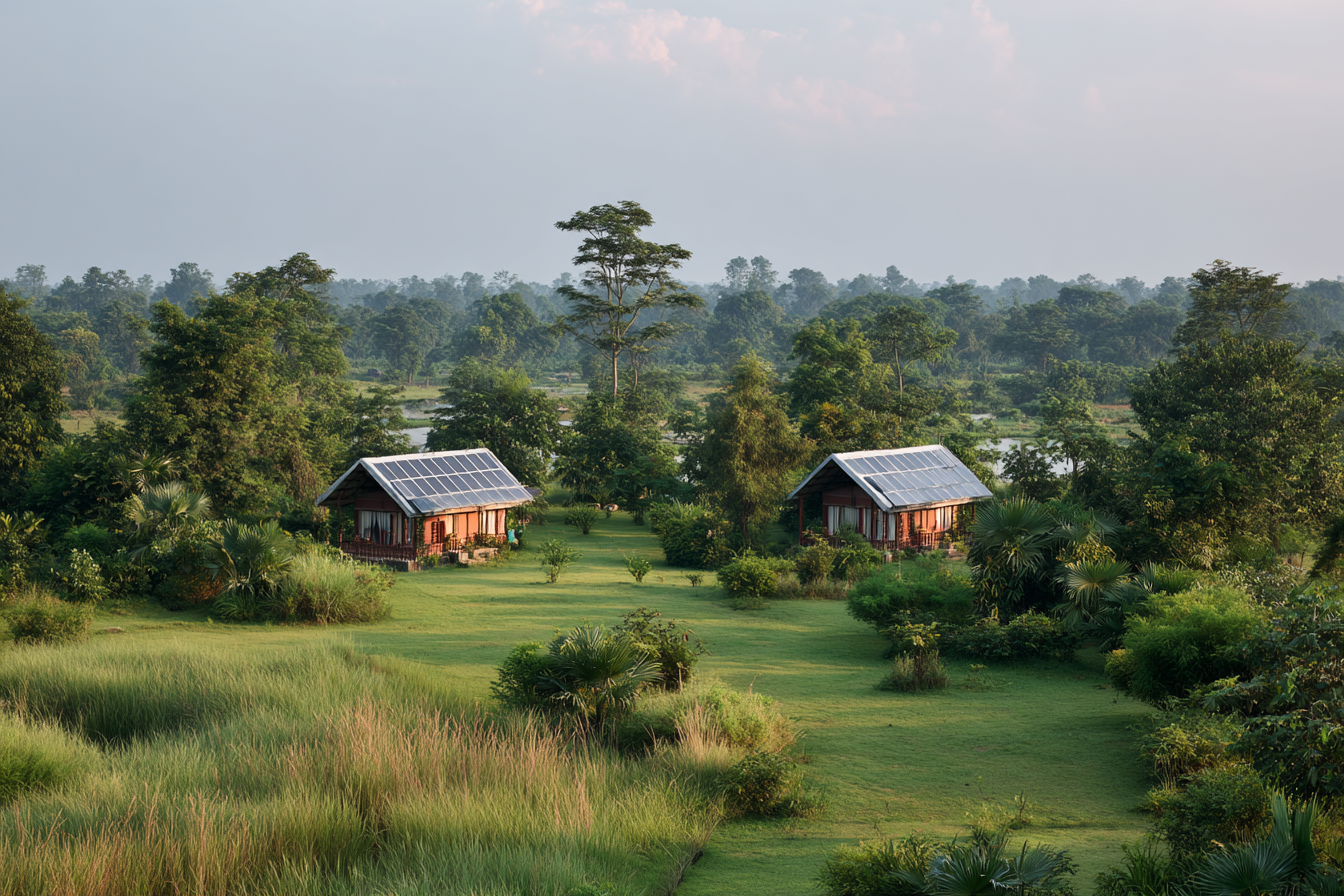Lumbini, known globally as the birthplace of Lord Buddha, is not only a spiritual and historical treasure but also an emerging hub for eco-tourism. As more travelers seek meaningful and environmentally responsible experiences, Lumbini is embracing sustainable travel practices that protect its cultural heritage and natural surroundings. This approach is creating wonderful opportunities for visitors to engage with the region in a way that honors both its past and its future. Let’s explore how eco-tourism is growing in Lumbini and how you can be part of this mindful movement.
Eco-Friendly Lodging and Tours in Lumbini
One of the primary ways Lumbini supports eco-tourism is through the development of eco-friendly accommodations. Several guesthouses, lodges, and resorts are adopting sustainable practices such as utilizing solar energy, reducing plastic use, and managing waste responsibly. These eco-lodges often source food locally, which not only reduces carbon footprints but also supports the region’s farmers and food producers.
Additionally, eco-friendly tours are gaining popularity in Lumbini. Tour operators are designing itineraries that minimize environmental impact—such as walking tours and cycling routes—to offer a more immersive connection with the landscape. These tours often include visits to organic farms, birdwatching in natural habitats, and guided explorations of the sacred sites in a way that promotes respect and preservation. Many guides are locals who provide insights into the cultural and ecological significance of the area, enriching the visitor experience.
Conservation Initiatives in the Region
Lumbini’s natural environment and cultural sites are supported by various conservation projects aimed at safeguarding its heritage. Efforts include reforestation programs to maintain the greenery that surrounds this archaeological zone, protecting native wildlife, and preserving water resources. The local government and non-governmental organizations collaborate to restore and maintain ancient monuments while promoting environmental awareness among residents and visitors alike.
One prominent conservation project focuses on maintaining the sacred gardens and wetlands that contribute to Lumbini’s biodiversity. These green spaces provide a crucial habitat for many bird species and other animals, making Lumbini a meaningful spot for eco-conscious travelers who also appreciate wildlife. These initiatives help ensure that the area remains vibrant and welcoming for future generations.
How Travelers Can Minimize Their Impact
Travelers play a vital role in ensuring that Lumbini’s eco-tourism efforts succeed. There are simple yet effective ways visitors can minimize their environmental footprint while enjoying their stay:
- Choose accommodations and tour operators that follow sustainable practices.
- Reduce waste by using refillable water bottles and avoiding single-use plastics.
- Respect local customs and sacred sites by following guidelines and maintaining cleanliness.
- Walk or bike between sites instead of using motorized transport whenever possible.
- Engage in responsible wildlife watching without disturbing natural habitats.
- Support local businesses by purchasing handmade crafts and regional products.
Being mindful and respectful not only protects Lumbini’s environment but enhances your overall travel experience by fostering a deeper connection with the place and its people.
Community-Based Tourism Projects
A remarkable aspect of Lumbini’s eco-tourism development is the rise of community-based tourism (CBT) projects. These initiatives empower local communities by involving them directly in tourism activities, ensuring that economic benefits are shared fairly and that cultural traditions are preserved.
Many villages around Lumbini have started offering homestays, where visitors can enjoy an authentic glimpse of local life, cuisine, and customs while contributing to community income. Handicraft workshops, cultural performances, and guided nature walks led by residents create meaningful interactions and foster mutual respect. CBT creates a sustainable cycle where tourism supports community development, which in turn helps conserve the environment and heritage.
Benefits of Sustainable Travel at Lumbini
Choosing sustainable travel options at Lumbini opens up several benefits—not just for the environment but also for travelers and the local community. By prioritizing eco-tourism, visitors contribute to the preservation of this sacred landscape and help protect its fragile ecosystems. They also gain a more authentic and fulfilling travel experience, enriched by genuine human connections and a sense of purpose.
For the local population, sustainable tourism offers a pathway to economic stability and cultural pride without compromising their natural resources. It fosters education about the importance of conservation and equips communities with skills in sustainable business practices. In the long run, eco-tourism helps maintain Lumbini as a peaceful sanctuary where spiritual and ecological values harmoniously coexist.
Protecting Lumbini’s Future through Conscious Travel
As an ancient site of immense spiritual significance, Lumbini invites us to practice mindfulness—not only in meditative reflection but also in how we engage as travelers. Embracing eco-tourism here means committing to protecting the environment, respecting cultural heritage, and supporting local communities.
By selecting eco-friendly accommodations, participating in sustainable tours, and engaging with community-based projects, visitors can ensure that Lumbini remains a vibrant and treasured destination for generations to come. Exploring Lumbini through the lens of eco-tourism is not only an adventure in discovery but also a pledge towards responsible stewardship of this unique and sacred place.







